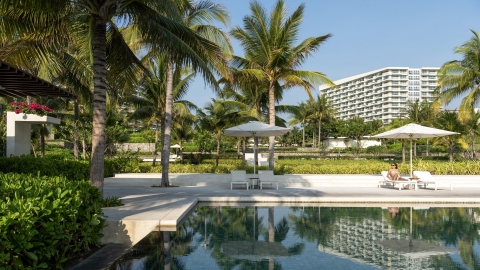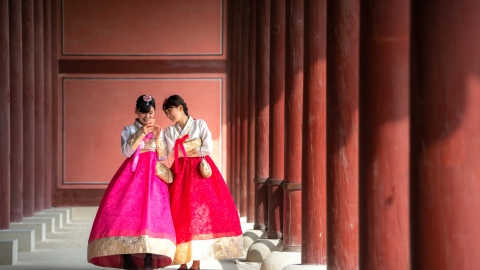Turtuk, a mysterious village stuck on the border of India and Pakistan, is a living testament to a world lost in time. Surrounded by the majestic Karakoram Mountains and the Shyok River, Turtuk preserves a subsistence way of life, with old mud houses, lush apricot orchards, and a life without phones or wifi. This is a journey into the heart of a land where history and culture intersect to create a rich and unique heritage.
Turtuk, which was part of Pakistan-occupied Kashmir until 1971, is a remote area, thanks both to recent geopolitical turmoil and its particularly difficult geography. It is one of only four villages in India located in the Baltistan region. However, Turtuk is strategically important as a gateway to the Silk Road.
A place completely isolated from the outside world
Nestled between the border of India and Pakistan, Turtuk is a rare gem, shining amidst the majestic Karakoram Mountains. This small village, with its wild beauty and strangely peaceful atmosphere, always urges the souls who love to explore.

Nestled at the foot of the majestic Karakoram range, beside the gentle Shyok River, Turtuk is a hidden gem in the land of Ladakh.
At first, when you set foot in Turtuk, you will think, what is special about this small town located between the border of Pakistan and India compared to other valleys in Nubra? However, when you just step over the wooden bridge, follow the tiny alleys winding deep into the village, you will discover a new world.
Life here passes slowly and simply, like a slow-motion film, completely separate from the hustle and bustle of the outside world. They live with green fields, babbling streams and simple earthen houses. Turtuk people live in harmony with nature, creating exquisite handicrafts with their own hands. Turtuk is not only a place, but also a fairy tale, waiting to be discovered.

This small village, once part of Pakistan, is now a tourist destination known for its wild beauty and unique culture.
The harsh landscape of the border region seems to be unable to harmonize with the gentle beauty. However, this small village is an exception. The white buckwheat fields are like clouds drifting across the deep blue sky, creating a scene that is both majestic and romantic. The ancient stone house, with its colorful windows, is a unique highlight in the middle of the wild nature.

Turtuk village is a small, anonymous village but has rare fairy-tale beauty in the world.
In this pretty village, men do the praying, while women are the main labor force. It is not difficult to see plump women with round faces, high cheekbones and sparkling eyes. They nimbly carry large bundles of buckwheat through the small alleys, or diligently harvest crops in the fields.
A peaceful life worth dreaming about
In Turtuk, people live a self-sufficient life. Thanks to the Shayok River, they grow wheat, buckwheat and some other crops such as tomatoes and cabbage. In particular, apricot is a popular crop and is also the main source of income for the people of Turtuk village.

Turtuk village is a small, anonymous village but has rare fairy-tale beauty in the world.
Under the cool shade of the trees, the clear sound of flowing water seemed to erase the harsh sun and wind of the road we had traveled today. People take advantage of the cool water of the Shayok River for daily activities and agricultural cultivation. They take water directly from the streams that flow through the village. People also use the coolness of the water to make an outdoor "ice refrigerator", which does not cost a penny of electricity but can keep fruits fresh.

Apricots are one of Turtuk's "specialties". People sell dried apricots all over the streets. Every harvest season, people squeeze apricot juice to drink instead of meals to detoxify their bodies. The agricultural products and fruits here are very clean and free of chemicals. That's why everyone in the village has healthy, beautiful skin and a high average life expectancy.
Although living in isolation from the outside world and with very limited conditions, Turtuk village has very "civilized" rules that surprise visitors: no smoking, no littering, and don't be too surprised if you ask to buy a bottle of water and you will receive a shake of the head that there is no bottled water.

Being a high desert, Turtuk receives almost no rainfall.
They mostly use water directly from the streams that run along the village paths, and like other villages in Ladakh, any food is wrapped in newspapers.

To get here, you have to cross the winding mountain passes of the Nubra valley with all kinds of terrain, from arid limestone mountains to deep ravines.
Turtuk, not only a peaceful village hidden between the border of India and Pakistan, but also a living history book. Every ancient stone house, every narrow road, every buckwheat field tells a story of the glorious past and the vicissitudes of time. Turtuk is a living testament to the unique blending and combination of cultures, creating a distinct and attractive identity.
Coming to Turtuk, try living in an environment with no phones, no wifi, no social networks... stripping away all modern conveniences to immerse yourself in the natural world is a truly exciting experience.




































